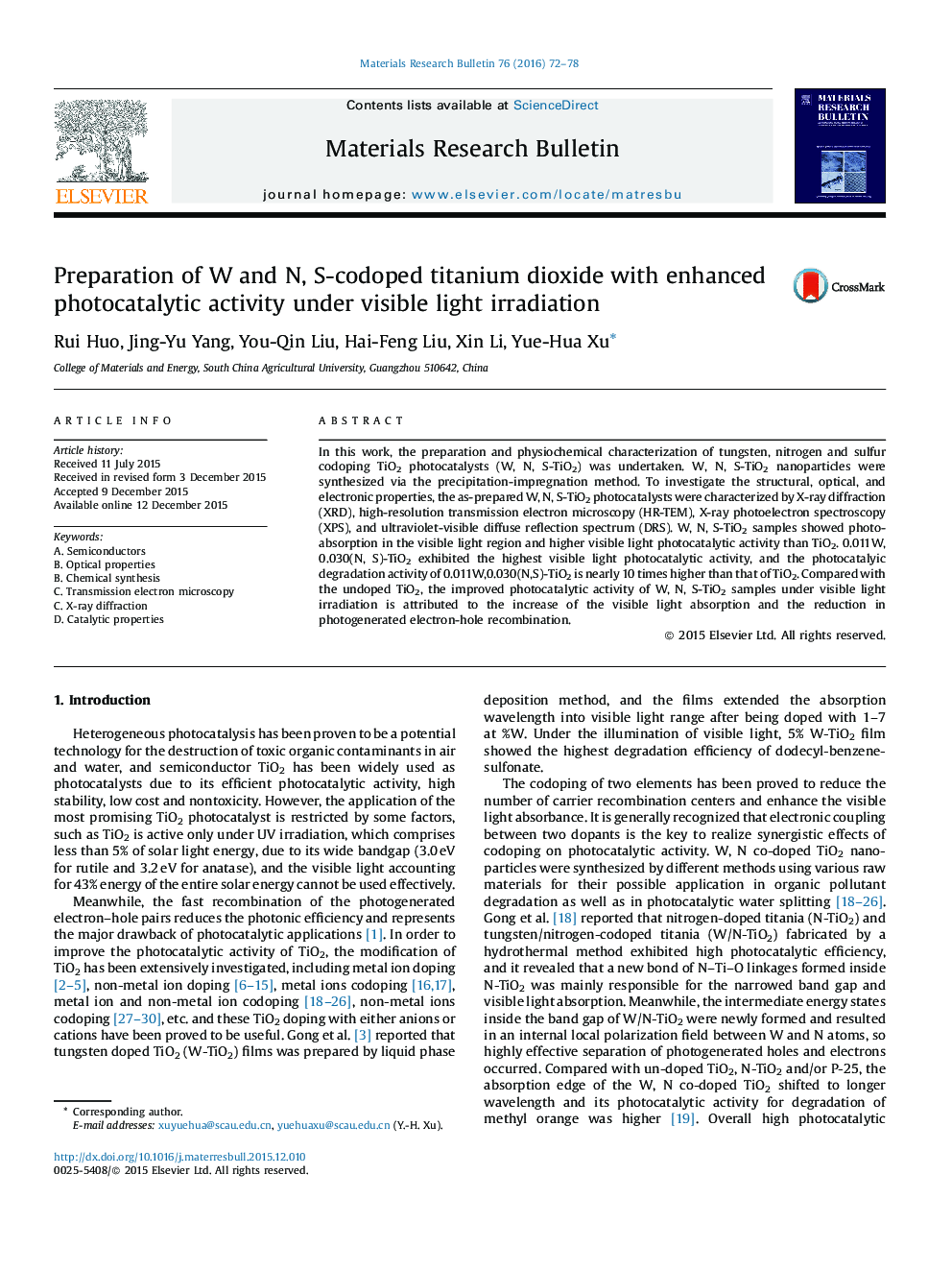| Article ID | Journal | Published Year | Pages | File Type |
|---|---|---|---|---|
| 1487363 | Materials Research Bulletin | 2016 | 7 Pages |
•W, N, S codoped TiO2 nanoparticles were synthesized by precipitation-impregnation method.•New linkages N–Ti–O, Ti–O–S and Ti–O–W were formed.•The activity of 0.011W, 0.030(N,S)-TiO2 is 10 times higher than that of TiO2.•The doping enhanced visible light absorbance and accelerated the charge carrier separation.
In this work, the preparation and physiochemical characterization of tungsten, nitrogen and sulfur codoping TiO2 photocatalysts (W, N, S-TiO2) was undertaken. W, N, S-TiO2 nanoparticles were synthesized via the precipitation-impregnation method. To investigate the structural, optical, and electronic properties, the as-prepared W, N, S-TiO2 photocatalysts were characterized by X-ray diffraction (XRD), high-resolution transmission electron microscopy (HR-TEM), X-ray photoelectron spectroscopy (XPS), and ultraviolet-visible diffuse reflection spectrum (DRS). W, N, S-TiO2 samples showed photo-absorption in the visible light region and higher visible light photocatalytic activity than TiO2. 0.011W, 0.030(N, S)-TiO2 exhibited the highest visible light photocatalytic activity, and the photocatalyic degradation activity of 0.011W,0.030(N,S)-TiO2 is nearly 10 times higher than that of TiO2. Compared with the undoped TiO2, the improved photocatalytic activity of W, N, S-TiO2 samples under visible light irradiation is attributed to the increase of the visible light absorption and the reduction in photogenerated electron-hole recombination.
Graphical abstractFigure optionsDownload full-size imageDownload as PowerPoint slide
